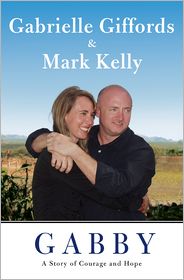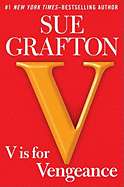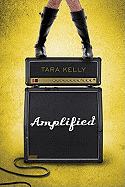Gabby
Today marks the publication of a book about an amazing person, an amazing couple and their amazing story. 
Giffords is, of course, the congresswoman who was shot in January in a strip mall in Arizona, where she was meeting constituents. Astoundingly, with the help of her husband, who was captain of the last mission of the space shuttle Endeavor and has retired from NASA, and a team of doctors and nurses, she can speak, if haltingly, and walk. She's still a long way from leading the life she had--but she keeps progressing beyond expectations. In the book, written with the help of Wall Street Journal columnist Zaslow (co-author of The Last Lecture and Chesley "Sully" Sullenberger's memoir), the couple tell of the fairy tale life they had until this year--and what life has been like since the shooting.
The book was kept under wraps until today--and publicity about it began only last night, when Diane Sawyer interviewed Giffords and Kelly on ABC's 20/20. The public will hear a lot about it now: Kelly is making the rounds of TV and radio shows, including the Daily Show with Jon Stewart, Good Morning America, All Things Considered and On the Record with Greta Van Susteren.
This is a sad but ultimately heartwarming, uplifting tale: the continuing recovery of a vibrant, brilliant woman who survived a point-blank gunshot that should have killed her, helped by a husband who never gave up his belief that she will recover. Giffords wrote the final chapter of the book, consisting of 19 lines, and reads that section on the audio version. "Hope and faith," Gabby Giffords says in words that everyone can acknowledge. "You have to have hope and faith... I will get stronger. I will return."



 The most popular scent in perfumer Christopher Brosius's "I Hate Perfume" collection is "
The most popular scent in perfumer Christopher Brosius's "I Hate Perfume" collection is " What does "A Novelist Imagines a Life" mean? First, it means that this is a work of fiction. Beattie has not set out to write a straight biography or a narrative account of Pat Nixon and her notorious spouse. Second, it means that the author has done a lot of research into Mrs. Nixon's life in order to fashion imagined conversations and inner dialogues.
What does "A Novelist Imagines a Life" mean? First, it means that this is a work of fiction. Beattie has not set out to write a straight biography or a narrative account of Pat Nixon and her notorious spouse. Second, it means that the author has done a lot of research into Mrs. Nixon's life in order to fashion imagined conversations and inner dialogues. American Wife: A Novel by Curtis Sittenfeld may well be viewed in the future as an American masterpiece, so wholly does the author create a world resembling that of First Lady Laura Bush and her upbringing, education, courtship with and marriage to President George W. Bush. The novel pulls off the trick of being sympathetic yet astonishing, and so well paced that by its final page readers may find themselves gasping for breath.
American Wife: A Novel by Curtis Sittenfeld may well be viewed in the future as an American masterpiece, so wholly does the author create a world resembling that of First Lady Laura Bush and her upbringing, education, courtship with and marriage to President George W. Bush. The novel pulls off the trick of being sympathetic yet astonishing, and so well paced that by its final page readers may find themselves gasping for breath. The Downing Street Years by Margaret Thatcher is no great work of literature, and Britain's "Iron Lady" certainly doesn't "tell all." Yet this first volume of Thatcher's memoirs is fascinating reading for political buffs, personality buffs and historical buffs alike, since the former prime minister doesn't stint on her opinions any more on the page than she did when she was in office during the 1980s.
The Downing Street Years by Margaret Thatcher is no great work of literature, and Britain's "Iron Lady" certainly doesn't "tell all." Yet this first volume of Thatcher's memoirs is fascinating reading for political buffs, personality buffs and historical buffs alike, since the former prime minister doesn't stint on her opinions any more on the page than she did when she was in office during the 1980s. Founding Mothers: The Women Who Raised Our Nation by Cokie Roberts includes First Ladies like Martha Washington and Abigail Adams, but it doesn't stop with them or even with the wives of our nation's Founding Fathers; journalist Roberts takes the time to tell the stories of Aaron Burr's mother, Esther; African-American poet Phillis Wheatley; and Sarah Livingston Jay, wife of diplomat John Jay.
Founding Mothers: The Women Who Raised Our Nation by Cokie Roberts includes First Ladies like Martha Washington and Abigail Adams, but it doesn't stop with them or even with the wives of our nation's Founding Fathers; journalist Roberts takes the time to tell the stories of Aaron Burr's mother, Esther; African-American poet Phillis Wheatley; and Sarah Livingston Jay, wife of diplomat John Jay. The Descendants, based on the novel by Kaui Hart Hemmings, opens tomorrow. George Clooney stars as a Hawaiian landlord who, along with his two estranged daughters, seeks out his wife's secret lover after she suffers a terrible boating accident. The movie tie-in edition is available from Random House ($15, 9780812982954).
The Descendants, based on the novel by Kaui Hart Hemmings, opens tomorrow. George Clooney stars as a Hawaiian landlord who, along with his two estranged daughters, seeks out his wife's secret lover after she suffers a terrible boating accident. The movie tie-in edition is available from Random House ($15, 9780812982954).










